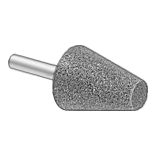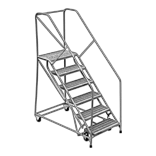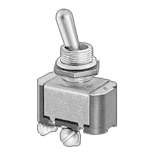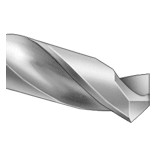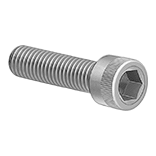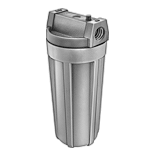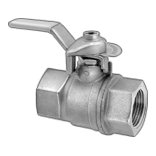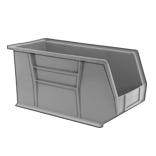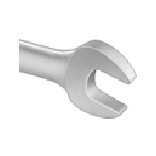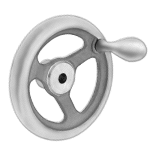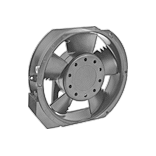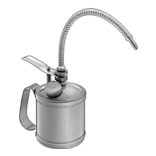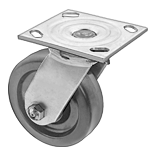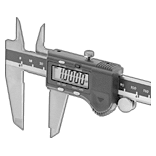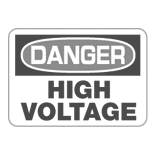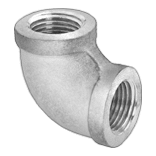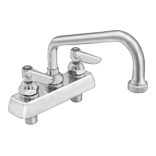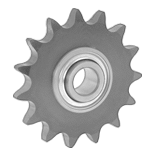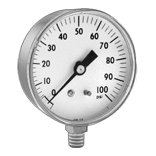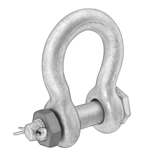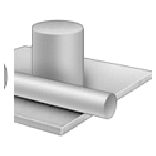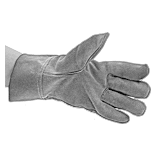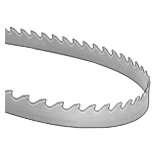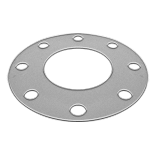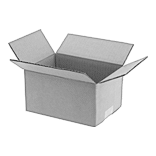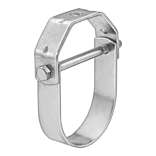About Timer Relays
More
Circuit Board Safety Relays

Reduce connection errors on circuit boards that control machine guards and other safety devices. Also known as force-guided contact relays, they have contact pairs that won’t close at the same time, even if contacts stick or weld shut. These relays take up less space on a board than those with electrical wiring because their solder pin terminals mount directly through circuit board holes. Use them to control high-power components, such as fans and heaters, from a low-power circuit.
Relays with a mechanical indicator show you whether they’re switched on or off with a flag. Peek through the window on the side to quickly check the flag’s position.
For technical drawings and 3-D models, click on a part number.
| Number of Terminals | Input Voltage | Control Current, mA | Switching Current @ Voltage | Max. Switching Voltage | Mechanical Life Cycles | Ht. | Wd. | Dp. | Pin Lg. | Features | Each | |
2 Circuits Controlled with 2 Off (Normally Open) or 2 On (Normally Closed)—DPDT | ||||||||||||
|---|---|---|---|---|---|---|---|---|---|---|---|---|
| 8 | 24V DC | 29 | 3 A @ 240 V AC/24 V DC | 250V AC, 125V DC | 10,000,000 | 1.1" | 0.5" | 1" | 0.16" | Interlocked Opposing Contacts, Mechanical Indicator | 0000000 | 000000 |
| 8 | 24V DC | 29 | 8 A @ 240 V AC | 250V AC | 10,000,000 | 1.1" | 0.5" | 1" | 0.2" | Interlocked Opposing Contacts | 0000000 | 00000 |
Interface Safety Relays

These relays pair the transmission reliability of an interface relay with the fail-safe operation of a safety relay. Use them to communicate signals to devices like motors or sensors. They have interlocking contacts—also known as force-guided or mechanically linked contacts—so opposing contacts won't close at the same time. This minimizes the chance of arcing, so electricity won't jump across the contacts and interfere with your relay or system. They also have an interface that isolates input and output circuits to prevent damage from voltage spikes, reduce signal interference, and amplify signal. Mount them on 35 mm DIN rail (also known as DIN 3 rail). The relays disconnect from the socket for quick replacement.
For technical drawings and 3-D models, click on a part number.
Relays | Replacement Relays | |||||||||||||
|---|---|---|---|---|---|---|---|---|---|---|---|---|---|---|
| Number of Terminals | Input Voltage | Control Current, mA | Switching Current @ Voltage | Max. Switching Voltage | hp @ Switching Voltage | Mechanical Life Cycles | Ht. | Wd. | Dp. | Features | Each | Each | ||
2 Circuits Controlled with 2 Off (Normally Open) or 2 On (Normally Closed)—DPDT | ||||||||||||||
| 8 | 24V DC | 29 | 8 A @ 240 V AC | 250V AC | 1/2 hp @ 230 V AC | 10,000,000 | 3.1" | 0.6" | 2.4" | Interlocked Opposing Contacts | 0000000 | 000000 | 0000000 | 000000 |
Hazardous Location Relays


Sealed for safety, these relays are a good choice for hazardous locations where combustible or corrosive gases may be present.
Relays with screw terminals or spring-clamp terminals are considered interface relays, so they’re placed between your controller and components to isolate the input and output circuits. This means they protect your component from voltage spikes while amplifying the relay’s signal and reducing interference for reliable transmission. They are often used for switching applications, such as small motors and pilot lights. The included relay socket mounts on 35 mm DIN rail (also known as DIN 3 rail). Relays with spring-clamp terminals connect and disconnect to wires without needing to turn screws. With no screws to shake loose with vibration, the terminals hold tight over time.
For technical drawings and 3-D models, click on a part number.
| Number of Terminals | Input Voltage | Control Current, mA | Switching Current @ Voltage | Max. Switching Voltage | Ht. | Wd. | Dp. | Environmental Rating | Each | |
Screw Terminals | ||||||||||
|---|---|---|---|---|---|---|---|---|---|---|
1 Circuit Controlled with 1 Off (Normally Open) or 1 On (Normally Closed)—SPDT | ||||||||||
| 5 | 12V AC, 12V DC | 29 | 12 A @ 240 V AC/24 V DC | 400V AC/300V DC | 2.9" | 0.6" | 3.5" | IP20; NEC Class I Division 2 Groups A, B, C, D | 00000000 | 000000 |
Spring-Clamp Terminals | ||||||||||
1 Circuit Controlled with 1 Off (Normally Open) or 1 On (Normally Closed)—SPDT | ||||||||||
| 5 | 12V AC, 12V DC | 29 | 12 A @ 240 V AC/24 V DC | 400V AC/300V DC | 2.9" | 0.6" | 3.7" | IP20; NEC Class I Division 2 Groups A, B, C, D | 0000000 | 00000 |
Solid State Surface-Mount Timer Relays
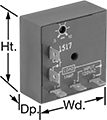
Attach these relays to a flat surface using the mounting hole. They have no moving parts, so compared to mechanical switches, they require less maintenance, last longer, and are quieter.
Delayed start (delay-on-make) relays allow you to set how long it takes for the relay to turn on after input voltage is applied. For example, a drill starts pumping a lubricant immediately, but it does not start rotating until the set time has elapsed.
For technical drawings and 3-D models, click on a part number.
Timing Range | ||||||||||
|---|---|---|---|---|---|---|---|---|---|---|
| Number of Terminals | Input Voltage | Control Current, mA | No. of | Overall | Switching Current @ Voltage | Ht. | Wd. | Dp. | Each | |
Delayed Start (Delay-on-Make) | ||||||||||
1 Circuit Controlled with 1 Off (Normally Open) or 1 On (Normally Closed)—SPDT | ||||||||||
| 5 | 120V AC | 29 | 1 | 0.05 sec.-1 sec. | 8 A @ 240 V AC | 2" | 2" | 0.9" | 00000000 | 000000 |
| 5 | 120V AC | 29 | 1 | 0.25 sec.-5 sec. | 8 A @ 240 V AC | 2" | 2" | 0.9" | 00000000 | 00000 |
| 5 | 120V AC | 29 | 1 | 0.5 sec.-10 sec. | 8 A @ 240 V AC | 2" | 2" | 0.9" | 00000000 | 00000 |
| 5 | 120V AC | 29 | 1 | 3 sec.-60 sec. | 8 A @ 240 V AC | 2" | 2" | 0.9" | 00000000 | 00000 |
| 5 | 120V AC | 29 | 1 | 15 sec.-300 sec. | 8 A @ 240 V AC | 2" | 2" | 0.9" | 00000000 | 00000 |
| 5 | 120V AC | 29 | 1 | 30 sec.-10 min. | 8 A @ 240 V AC | 2" | 2" | 0.9" | 00000000 | 00000 |
